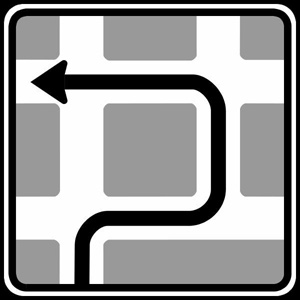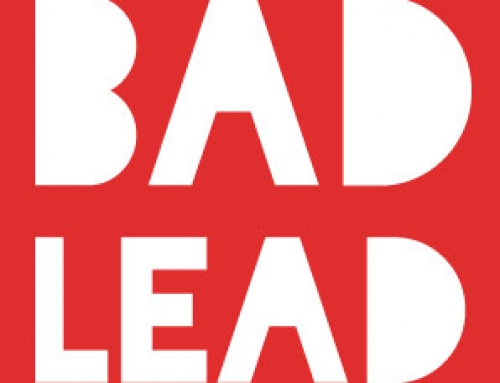 We love options. The more the better, right? Sure. So give your customers options. We also like comparisons. So show your customers comparisons with your competition (assuming you’re confident in your product, which one hopes you are). So the question is: with all these options and comparisons, how do you help nudge them to pick yours?
We love options. The more the better, right? Sure. So give your customers options. We also like comparisons. So show your customers comparisons with your competition (assuming you’re confident in your product, which one hopes you are). So the question is: with all these options and comparisons, how do you help nudge them to pick yours?
We’re talking about designing as many business practices as possible to facilitate manipulating the decision process or shaping their decision paradigms; controlling the debate – getting in front of the counter arguments (those that your competition use to say why their product is “the best”); shaping the decisions paradigms just enough to give the customer autonomy, but frame the decision to put your product on top. (And yes… it really helps if you really DO have the best product.) 😉
Designing an infrastructure of anything from sales scripts, to web sites, to product design so that Process influences and guides (manipulates) Intent. It sounds base, but we all know inside that it’s true: if your control the process by providing universally preferable or not preferable options, then you can help guide a potential customer to becoming a customer. Frame the debate. There are some suppositions that cannot be lost in the process of building your approach:
- Make it look like you are forfeiting control of the situation. They have 100% autonomy. They are in control, they have the power, and they make the decision. You just make the alternate and other options distasteful – thusly gently pushing them in the direction you want (without being distasteful or obvious in how you go about doing so).
- Think of the sales or request process as a “choose your own ending” sort of book, but you’ve stacked the deck. The language and order in which you present ideas, options, etc. can always guide them to exactly where you want, regardless of from where they began – like a good game of 20 questions, and the order in which you present/retract the options can be extremely important.
Let’s assume you’re trying to sell to every person on Earth. Start with your structure: it needs an infinite number of entry points (for corresponding interests), and each has its own path(s) that ascend to the point of sale or lead acquisition. You can influence people to take the doors you want them to; you just need to make it their decision… by successively reducing their options and in the proper order that gives you the home field advantage. Their buying decisions become subtly guided by the path you try to make them travel during the research and purchases process. If you’re targeting a smaller group of people, simply modify your entry points to fit their interests.
As usual with most things I write about here, this sort of cat and mouse game is nothing new, but what surprises me so often is that this process is often ignored in many parts of a business structure. It can be applied pretty much anywhere (if necessary), and can help convert enough new customers to justify spending significant time on the design of the path, architecture, trap doors, and intent of Process.
On a sales level people use this all the time: have a list of answers (or objections) to every possible reason someone might say “No” and hang up the phone. Keep the bait alive. The problem in this example, though, is that it’s amazingly annoying. I hate sales calls, and there are a lot of people who feel the same as I do. We get sold predominantly online and rarely answer our landlines. Phones still work, but a rockin’ sales force alone is not your business savior.
To sell to me online, then, it’s not entirely wrong to take the philosophy of phone and in-person sales and apply it to site design and online marketing package structure. The rule for me and the generations surrounding mine, is that we hate being sold, but like being acknowledged. We hate pop ups, but digg, tweet, and share bookmarks to show we’re witty or interesting. We don’t buy immediately, but take notice instantaneously and file it for later investigation. We already know all this about our buying habits – YOU already know this. The question is: Does your business model (including all its aspects: sales design, marketing strategy, promotional schemes, store and site designs) support and encourage manipulating the decision process? Designing your system so that it fits your clients’ decision making process is the first step. Above all, make it easy and familiar to how they do things.
So what about progressively removing options? This, of course, is a little more tricky, but not if you take a little time to do one exercise for each major product or product line: mirror your customer against your product and find the characteristics in your product that people can also see in themselves (or who/what/where they want to be). Once you have those desires, figuring out the polarities (push back routes in the sales/decision path; decisions you know the customer WON’T make) is fairly easy. Now you have a general idea of what will turn your customer around a corner (mirrored characteristics), and what will make them avoid another (polarities).
You need both positive and negative influences in order to guide customers through the decision process. Having those, coupled with the entry points so you know from where they begin the maze, you can design a decision patch and guide them through it. Don’t forget to use both influences, however. The decision has to be real, and if the only motivation is one or the other (positive or negative) then the decision is fabricated and they won’t be as committed to clicking the order now button.
You have to let them explore, and surf, and compare – there’s no getting around that. However, if you have a great product; if you enter into the game with a keen understanding of a decision path, and if you design a sales system then progressively reduces their options using the decision path as a guide, then you’re going to be in great shape. Look at all aspects of your business model from product design, to sales strategy, to post-purchase support. By taking a small amount of time to better understands customer motivation, and constantly reminding yourself that you can use that to pull them through the process, you can smooth, speed and increase sales.







